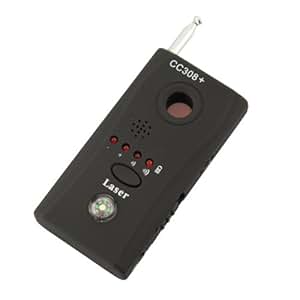In today’s hyper-connected world, corporate espionage is no longer a clandestine affair relegated to the silver screen. The reality is far more pervasive and sophisticated. From state-sponsored actors to disgruntled employees and opportunistic competitors, the threats to sensitive company information are constant and evolving. This has fueled a significant rise in the adoption of anti-spy devices, transforming the landscape of corporate security.
Why the Need for Anti-Spy Measures is Greater Than Ever

The sheer volume of data companies now possess – encompassing everything from intellectual property and financial records to customer databases and strategic plans – makes them incredibly lucrative targets. Data breaches can result in devastating financial losses, reputational damage, legal repercussions, and even national security implications. Traditional security measures, while crucial, are often insufficient to combat the increasingly advanced techniques employed by spies. This necessitates a proactive and multi-layered approach that includes the strategic deployment of anti-spy devices.
Types of Anti-Spy Devices Protecting Your Business

The market for anti-spy devices is robust and diverse, offering solutions tailored to specific needs and threat levels. Let’s explore some key categories:
1. Bug Detectors and Sweepers: Identifying Hidden Listening Devices
These devices detect radio frequency (RF) emissions from hidden microphones, cameras, and other surveillance equipment. Sophisticated bug sweepers can pinpoint the location of these devices, providing a crucial first line of defense against eavesdropping and visual surveillance. Regular sweeps of meeting rooms, offices, and other sensitive areas are essential for maintaining confidentiality.
2. GPS Tracking Device Detectors: Protecting Against Location Tracking
GPS trackers, often disguised as everyday objects, can be strategically placed on company vehicles or personal devices to track movements and activities. Detectors specifically designed to identify these trackers are becoming increasingly important in protecting executive mobility and preventing corporate espionage involving physical assets.
3. Signal Jammers: Disrupting Unauthorized Communication
Signal jammers disrupt the transmission of signals from unauthorized devices, preventing data leaks and communication interceptions. However, it’s crucial to use signal jammers responsibly and legally, as their operation may be restricted in certain locations or contexts. Compliance with local regulations is paramount.
4. Network Security Monitoring Tools: Identifying Internal Threats
While not strictly “devices” in the traditional sense, network security monitoring tools are indispensable in identifying and mitigating internal threats. These sophisticated systems constantly analyze network traffic, identifying suspicious activities, unauthorized access attempts, and data exfiltration efforts. They provide a critical layer of defense against insider threats, which often account for a significant percentage of data breaches.
5. Data Loss Prevention (DLP) Software: Preventing Sensitive Information from Leaving the Network
DLP software is a proactive solution that prevents sensitive data from leaving the network through unauthorized channels. It monitors email, file transfers, and other communication channels, identifying and blocking attempts to send confidential information outside the organization. This is a critical measure in protecting against both external and internal threats.
Implementing a Comprehensive Anti-Spy Strategy

The effective use of anti-spy devices requires a well-thought-out strategy. This should include:
- Regular security assessments to identify vulnerabilities and potential threats.
- Training employees on security best practices and awareness of potential threats.
- A clear incident response plan to deal with security breaches effectively.
- Regular updates and maintenance of security systems and devices.
- Collaboration with external security experts for consultation and advanced threat detection.
The Future of Anti-Spy Technology

As technology continues to advance, so too will the sophistication of espionage techniques. The future of anti-spy technology will likely see increased integration of AI and machine learning in threat detection and response. We can expect more sophisticated bug detectors, more effective network security monitoring, and AI-powered systems that anticipate and preempt threats before they materialize. The fight against corporate espionage is an ongoing battle, and the evolution of anti-spy devices is crucial to staying ahead of the curve.
In conclusion, the rise of anti-spy devices is a direct response to the increasing sophistication and frequency of corporate espionage. By implementing a multi-layered approach that utilizes the latest technology and security best practices, companies can significantly enhance their ability to protect valuable data and maintain a competitive advantage in today’s challenging environment.



